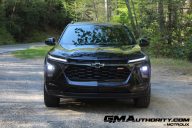Since a Cruise AV unit unintentionally dragged a pedestrian underneath it after they were struck by a human-driven vehicle, the autonomous driving company has been faced with strong headwinds as it attempts to continue development of its autonomous driving technology. To this end, Cruise has issued a recall to update the collision detection system in its Cruise AV units.
Given an NHTSA campaign number of 23E-086, this recall applies to all 950 Cruise AV models. Affected units will receive an over-the-air (OTA) update.
In regard to specifically what this recall entails, the autonomous driving company noted that its collision detection system is designed to direct the robotaxi to pull over out of the way of traffic in the event of an incident. The updated software will now instruct the Cruise AV units to remain stationary so as to minimize collateral damage, depending on the circumstances.
As a reminder, this aforementioned incident with the trapped pedestrian has caused quite the uproar. After the robotaxi pulled over to the side of the road – with the pedestrian stuck underneath – the San Francisco Fire Department was forced to use the jaws of life to lift the Cruise AV off the injured pedestrian, who was then promptly transported to a local hospital for immediate medical treatment.
“Our heartfelt concern and focus is the wellbeing of the person who was injured and we are actively working with police to help identify the responsible driver,” a Cruise spokesperson stated at the time.
It’s worth noting that there were no passengers present in the Cruise AV at the time of the incident.
Since this accident, the NHTSA has launched an investigation into the self-driving subsidiary, while the California DMV suspended its driverless operation license.
Subscribe to GM Authority for more GM Cruise AV news, GM Cruise news, GM AV news, GM recall news, GM business news, and around-the-clock GM news coverage.

















Comments
LOL
“quite the uproar”
Like Michigan stealing “signs” …
Really? What happens after an accident requires human intelligence. Programming the AV to pull over out of the way of traffic will sooner or later be the wrong answer. Flipping the script and programming the AV to remain stationary will sooner or later be the wrong answer. If the AV cannot be programmed to correctly access the situation and perform the correct after action, the AV has no business being on the road.
And I use the word AV because that is what Cruise calls it. The vehicles are in no way, shape, or form autonomous, never have been, most likely never will be. To be autonomous everything required to operate the vehicles would be onboard the vehicles and require no outside control systems.
Ban them from public roads.